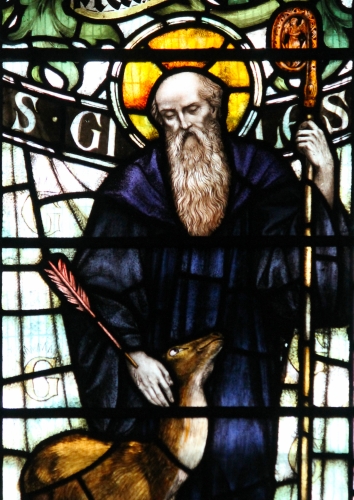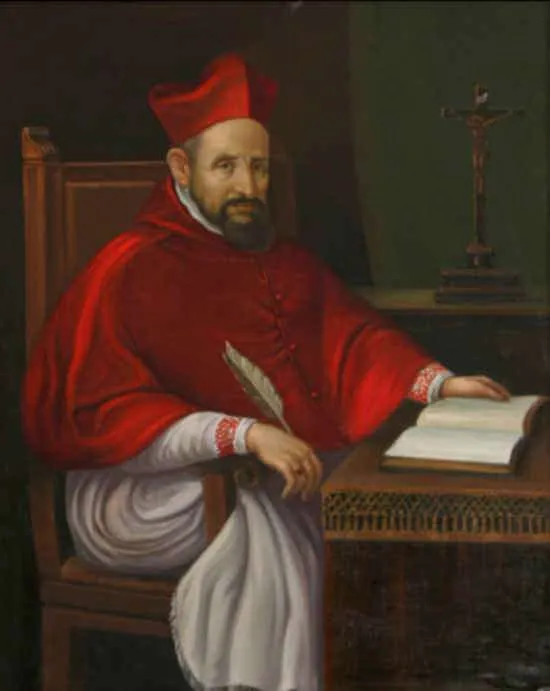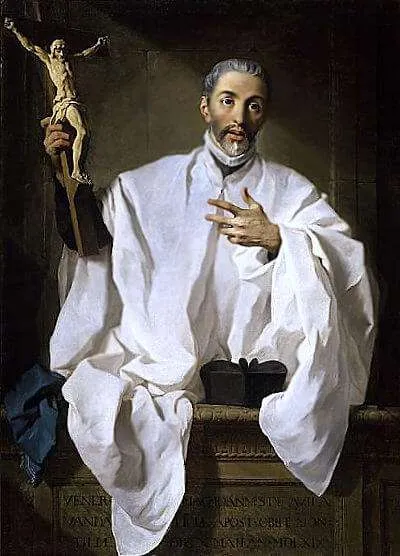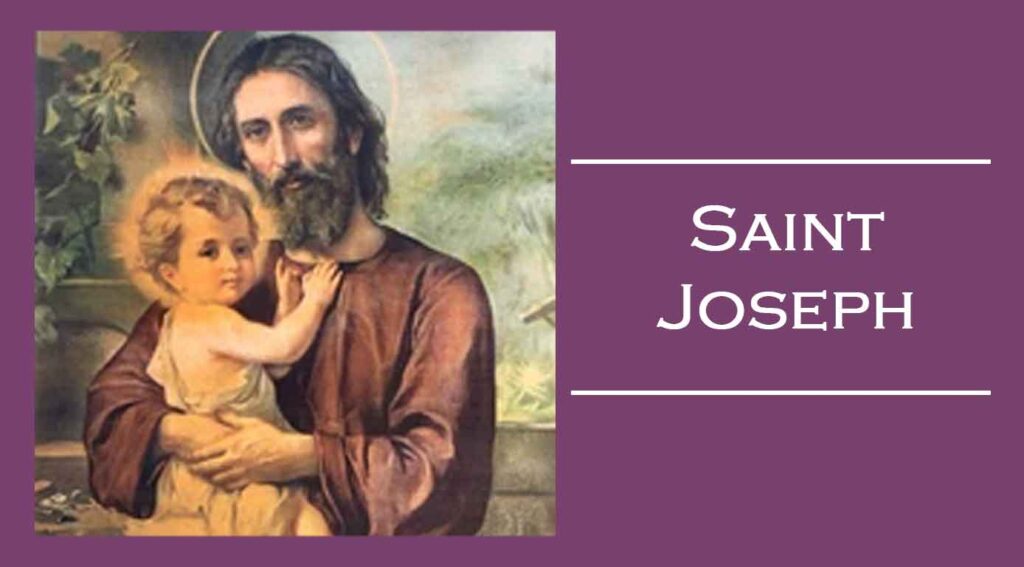Profile
Giles was born to a wealthy noble family. When his parents died, Giles gave his fortune to help the poor. He was known as a miracle worker. To avoid followers and adulation, he left Greece in c.683 for France where he lived as a hermit in a cave in the diocese of Nimes, a cave whose mouth was guarded by a thick thorn bush, and a lifestyle so impoverished that, legend says, God sent a deer to Giles to nourish him with her milk.
One day after he had lived there for several years in meditation, a royal hunting party chased the hind into Giles’ cave. One hunter shot an arrow into the thorn bush, hoping to hit the deer, but instead hit Giles in the leg, crippling him. The king sent doctors to care for the hermit‘s wound, and though Giles begged to be left alone, the king came often to see him.
From this, Gile’s fame as sage and miracle worker spread, and would-be followers gathered near the cave. The French king, because of his admiration, built the monastery of Saint Gilles du Gard for these followers, and Giles became its first abbot, establishing his own discipline there. A small town grew up around the monastery, and upon Giles’ death, his grave became a shrine and place of pilgrimage; the monastery later became a Benedictine house.
The combination of the town, monastery, shrine and pilgrims led to many handicapped beggars hoping for alms; this and Giles’ insistence that he wished to live outside the walls of the city, and his own damaged leg, led to his patronage of beggars, and to cripples since begging was the only source of income for many. Hospitals and safe houses for the poor, crippled, and leprous were constructed in England and Scotland, and were built so cripples could reach them easily. On their passage to Tyburn for execution, convicts were allowed to stop at Saint Giles’ Hospital where they were presented with a bowl of ale called Saint Giles’ Bowl, “thereof to drink at their pleasure, as their last refreshing in this life.”
In Spain, shepherds consider Giles the protector of rams. It was formerly the custom to wash the rams and colour their wool a bright shade on Giles’ feast day, tie lighted candles to their horns, and bring the animals down the mountain paths to the chapels and churches to have them blessed. Among the Basques, the shepherds come down from the Pyrenees on 1 September, attired in full costume, sheepskin coats, staves, and crooks, to attend Mass with their best rams, an event that marks the beginning of autumn festivals, marked by processions and dancing in the fields. He was one of the Fourteen Holy Helpers, the only one not to die as a martyr.
Born
at Athens, Greece
Died
- between 710 and 724 in France of natural causes
- legend says that those who attended his funeral heard choirs of angels singing and then fading away as they carried his soul to heaven
- his tomb is in the crypt of the abbey church of Saint-Gilles in Gard, France
- in 1562, Huguenots burned the abbey, murdered the monks, looted the church, and vandalized the tomb; the surviving relics of Saint Giles were distributed to other churches
- in Scotland in the seventeenth century, his relics were stolen from a church which triggered a great riot
Canonized
- Pre-Congregation
Patronage
- abandoned people; against abandonment
- against breast cancer
- against epilepsy
- against fear of night
- against insanity
- against leprosy
- against mental illness
- against noctiphobia
- against sterility
- beggars
- blacksmiths
- breast feeding
- cancer patients
- cripples
- disabled people
- epileptics
- forests
- handicapped people
- hermits
- horses
- lepers
- mentally ill people
- mothers
- noctiphobics
- physically challenged people
- paupers
- poor people
- rams
- spur makers
- woods
— - in Austria
– Graz
– Klagenfurt - in Italy
– Altavilla Silentina
– Camerata Nuova
– Caprarola
– Cavezzo
– Latronico
– Monte San Savino
– Tolfa
– Verrès - Edinburgh, Scotland
Representation
- arrow
- cave
- crosier
- deer, hind, doe, roe
- hermitage
- Benedictine monk accompanied by a hind
- lilies growing in the sand (refers to a legend that says three lilies blossomed in dry sand as Giles explained three points to prove the perpetual virginity of Mary to a doubter)
Source: https://catholicsaints.info/saint-giles/








